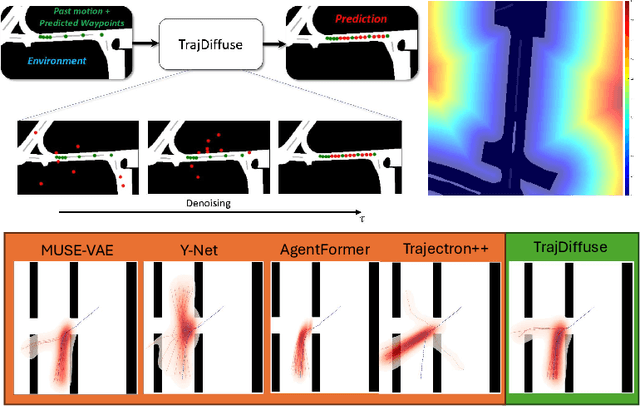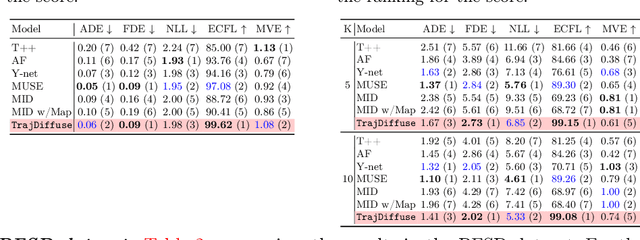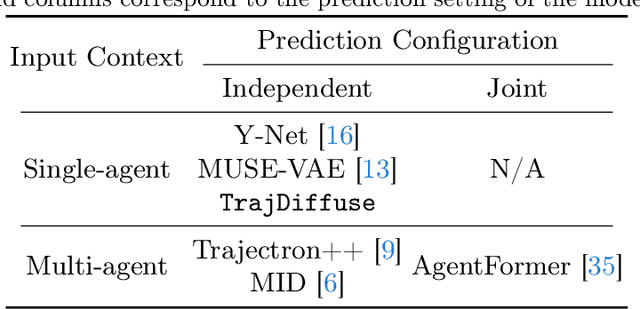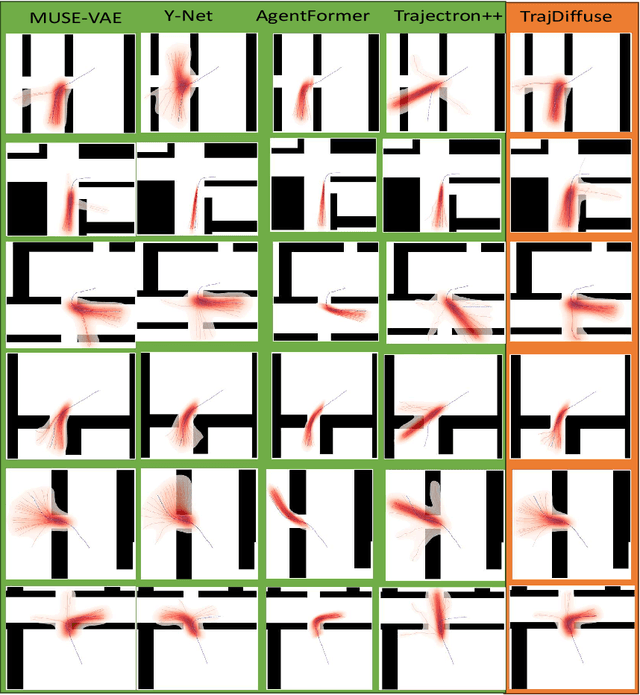Qingze
Tony
TrajDiffuse: A Conditional Diffusion Model for Environment-Aware Trajectory Prediction
Oct 14, 2024



Abstract:Accurate prediction of human or vehicle trajectories with good diversity that captures their stochastic nature is an essential task for many applications. However, many trajectory prediction models produce unreasonable trajectory samples that focus on improving diversity or accuracy while neglecting other key requirements, such as collision avoidance with the surrounding environment. In this work, we propose TrajDiffuse, a planning-based trajectory prediction method using a novel guided conditional diffusion model. We form the trajectory prediction problem as a denoising impaint task and design a map-based guidance term for the diffusion process. TrajDiffuse is able to generate trajectory predictions that match or exceed the accuracy and diversity of the SOTA, while adhering almost perfectly to environmental constraints. We demonstrate the utility of our model through experiments on the nuScenes and PFSD datasets and provide an extensive benchmark analysis against the SOTA methods.
Self Expanding Convolutional Neural Networks
Jan 17, 2024Abstract:In this paper, we present a novel method for dynamically expanding Convolutional Neural Networks (CNNs) during training, aimed at meeting the increasing demand for efficient and sustainable deep learning models. Our approach, drawing from the seminal work on Self-Expanding Neural Networks (SENN), employs a natural expansion score as an expansion criteria to address the common issue of over-parameterization in deep convolutional neural networks, thereby ensuring that the model's complexity is finely tuned to the task's specific needs. A significant benefit of this method is its eco-friendly nature, as it obviates the necessity of training multiple models of different sizes. We employ a strategy where a single model is dynamically expanded, facilitating the extraction of checkpoints at various complexity levels, effectively reducing computational resource use and energy consumption while also expediting the development cycle by offering diverse model complexities from a single training session. We evaluate our method on the CIFAR-10 dataset and our experimental results validate this approach, demonstrating that dynamically adding layers not only maintains but also improves CNN performance, underscoring the effectiveness of our expansion criteria. This approach marks a considerable advancement in developing adaptive, scalable, and environmentally considerate neural network architectures, addressing key challenges in the field of deep learning.
 Add to Chrome
Add to Chrome Add to Firefox
Add to Firefox Add to Edge
Add to Edge